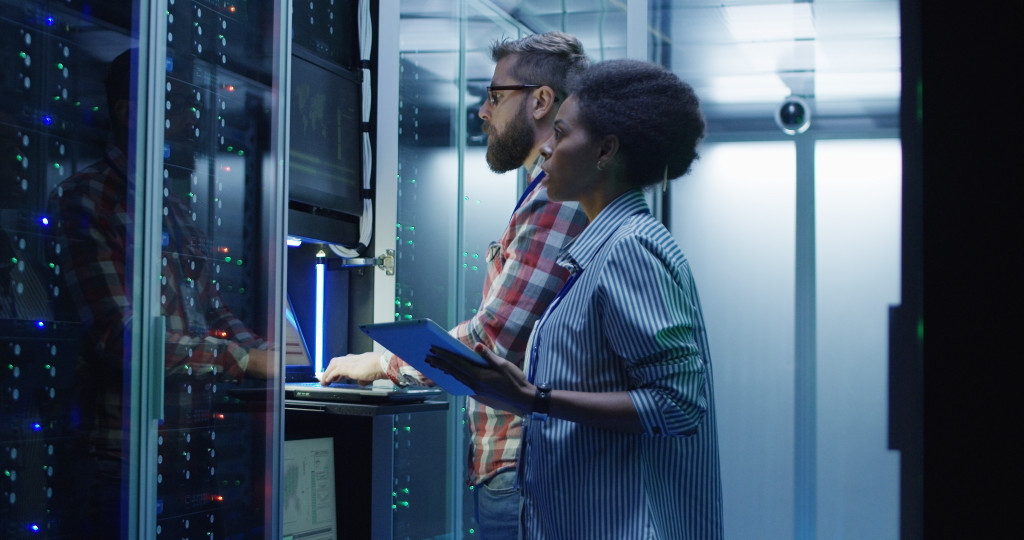All businesses today require some form of IT infrastructure for their day-to-day operations. Businesses in the tech and IT industry often require a larger infrastructure than those in the foodservice industry, but that still depends on their company’s individual needs. This means that their data centers vary in size too.
Most businesses are 100% code compliant with their data centers. However, it should be said that these codes are created with protecting the lives of employees in mind and not much about prioritizing the performance of a business. That’s why a lot of businesses are hindered by their inefficient data centers.
Don’t allow your business to suffer because of a poorly designed data center. You have the upper hand against other businesses because you’re only building your data center now, which means you can learn from their mistakes. So, take a page from their books and avoid making the same mistakes they did.
Creating the best data center for your business takes time because you can’t rush good outcomes. You’ll need to work with an engineer who knows their way around the industry and help you make a design that will fulfill all your IT needs. To help you, here are three layout factors that you should consider:
Protective Flooring
Understandably, when you’re thinking about the design of your data center, you might tend to focus on the arrangement of your equipment or how to fix the wiring properly. But you should also prioritize the construction of the center because it plays a large role in the upkeep and maintenance.
Take, for instance, if you didn’t know that there are good and bad options for a data center’s flooring, so you went with carpeting. But little did you know that carpeting is at high risk for catching fire on the off chance that sparks come flying from faulty hardware. Plus, it can collect lint and other contaminants.
Instead of randomly choosing your flooring material, consider finding one that can eliminate potential hazards to your employees and data center. A good example of this is using electrostatic floor coating to create a spark-free environment. This way, you won’t have to worry about the static buildup.

Backup Power and UPS Systems
Your business’s data center is like the mitochondria, which is the powerhouse of the cell. Your data center contains all the servers and storage units that will allow you to operate throughout the workday continuously. And without your data center, you’ll be losing potential profits and productivity due to downtime.
That’s why you’ll need to make sure that your data center has backup power and generators. You can’t let a power interruption hinder your business from operating, especially if you can do something about it as a preemptive measure. The number of generators you’ll need depends on how many servers, computers, and hardware units you’ll need to power in case of emergencies.
It’s also important to have an uninterruptible power source or UPS system. Unlike usual generators that take a while before kicking in, a UPS system works almost instantaneously to protect your hardware so that you won’t experience serious repercussions, such as loss of sensitive data or sustaining injuries in an unexpected power interruption.
Continuous Cooling
You can’t tackle the design of your data center without taking your cooling units into account. Keep in mind that the data center is supposedly the home for all your company’s IT hardware needs, which can include computers, servers, routers, and all the other equipment you need to operate every day.
All these pieces of equipment run on electrical power, which means they also give off heat. Imagine if your data center has no continuous cooling units to offset the heat that all your equipment gives off. There would be a high possibility that your hardware units will overheat and sustain irreparable damages in the process.
This means that you should consider the arrangement of not only your IT equipment but also the cooling units and HVAC system to be placed inside the data center itself. Doing so can eliminate the potential safety hazards that may come from accidental leaks or condensations because of uncontrolled internal temperatures.
Of course, many other design factors will come into play when building your data center. The flooring, backup power, and cooling systems are only some examples of what you need to prioritize during the construction because they can all impact how your data center will operate later on.
Aside from these aspects, you’ll also have to ensure that your data center is future-proof. By ensuring that your technologies are scalable and no longer using outdated processes, you can minimize the need to upgrade your equipment every few years simply because they can’t handle your workload.